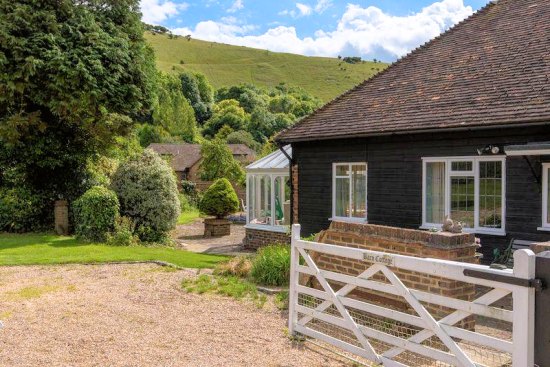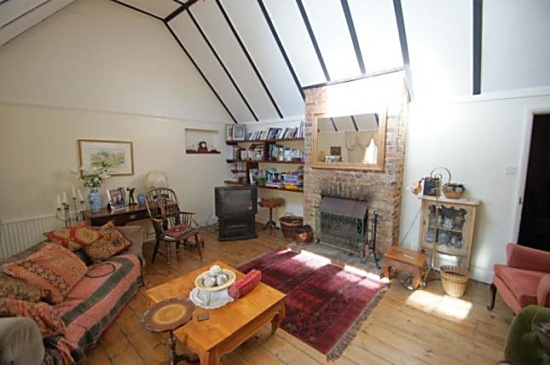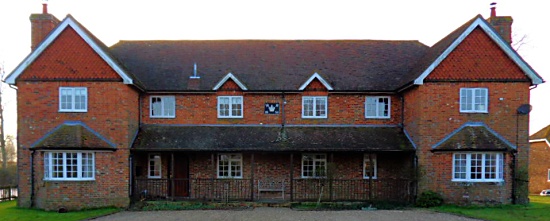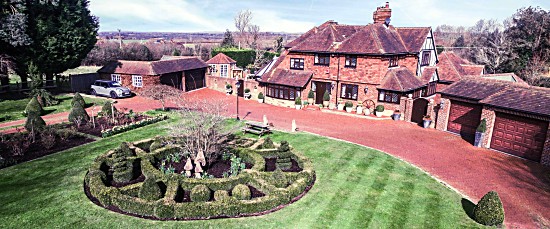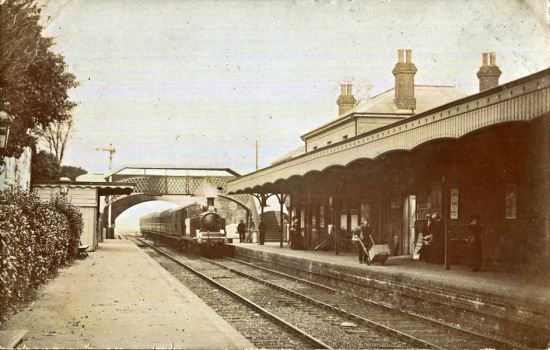
A talk by Eddie Colgate to Henfield History Group at 8:00pm on Tuesday 11th October 2016 in the Free Church Hall, Coopers Way, Henfield. Eddie Colgate is the author of the recently published book Henfield’s Wonderful Railway: The Brighton to Horsham Line 1861-1966, Winchester: George Mann Publications, 2015.
Category Archives: Local History
The Secret Sussex Radio Network
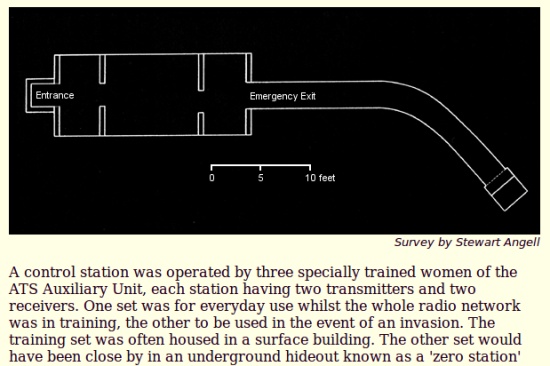
A talk by Stewart Angell to Beeding & Bramber Local History Society at 7:45pm in Upper Beeding Village Hall on Wednesday 5th October. [Recommended — your editor attended an excellent talk by this speaker a couple of years ago on a related topic. It took place in Ditchling Village Hall and every seat was taken.]
Saddlescombe Farm Heritage Open Day
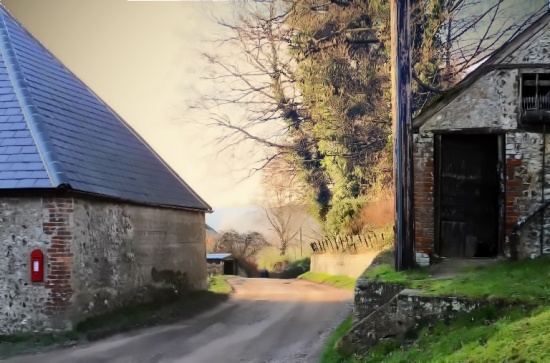
Tours of the 17th century Threshing Barn, Tudor Scullery and Donkey Wheel. You can also venture further afield for tours on surrounding Newtimber Hill. Refreshments at the Hiker’s Rest cafe. Children and dogs welcome. Parking £2 — follow signposts near Devil’s Dyke on the day. Sunday 11th September 2016, 10:30am–3:30pm, free admission.
The People of Beeding and Bramber in the Great War

Just published and available at £12 from local bookstores (including Steyning Bookshop, Henfield Museum, Steyning Museum and Beeding Newsagents). Diligent students of local government in Sussex will know that the Parish of Upper Beeding includes Edburton. This book thus covers all those listed on the Edburton & Fulking WWI memorial at St. Andrew’s and includes interesting biographical material on James Baker, Samuel Baker, William Baker, Charles Baldey, Arthur W. Brown, James E. Lucas, Elias Luff, Charles E. Sheppard and Richard Wearn.
On the market
In the 1930s, this site was where the village blacksmith’s shop stood. It was here that the farm and dray horses were shod and all the hardware (gates, hinges and wrought iron railings) for the Shepherd and Dog and the village houses were forged. It was originally part of the Bungalow Farm, known today as ‘Four Acres’ and it was later partitioned off from the farm as a separate property. The buildings comprised a wooden house with a corrugated iron roof and the oldest walls were constructed of horsehair, dried leaves and daub. Some of the original beams still form a feature of the interior of the house. An adjoining lean-to was fitted with a large, sliding door where carts were stored and behind this was a yard and stable.
Mr. Ernest (Ernie) Wingham, who kept cows off Holmbush Lane, occupied the house for many years. Ernie operated a milk round at the north end of Fulking. He also kept a stock of shotgun cartridges at the house and some of the older residents of the village can recall being sent to purchase these for their fathers’ guns. When Ernie later moved to Littledown Farm, he sold the property to the local builders, Ridge & Franks, who used the building to store their materials. They later rebuilt the property, converting it into a single dwelling and sold it. In the 1980s the site was enlarged to include an additional area of land to the east, which provided a garden and parking area. Parts of the old farm walls still survive as testament to the origins of this small cottage with its wonderful views south to the Downs.
Passages quoted from Anthony R. Brooks (2008) The Changing Times of Fulking & Edburton. Chichester: RPM Print & Design, pages 142-143.
Centenary — The Day Sussex Died

Arthur Brown, William Reed and John Goldsmith were all members of the 11th, 12th, and 13th Southdown Battalions of the Royal Sussex Regiment. These had been raised by Lieutenant Colonel Claude Lowther of Herstmonceux Castle, the Member of Parliament for Eskdale, Cumberland. They were comprised mainly of Sussex men and affectionately known as Lowther’s Lambs. The battalion mascot was Peter, an orphaned Southdown lamb from Church Farm, Coombes in the Adur valley. The first taste of action of the Southdown Battalions was the Battle of the Boar’s Head at Richebourg L’Avoue, Pas de Calais, on 30th June 1916. This became known as The Day Sussex Died when the three battalions lost 17 officers and 349 other ranks and nearly three times that number were wounded.
SD/4950 Private Arthur William Brown, 11th (1st Southdown) Battalion, born in Westmeston, East Sussex, in 1883, Arthur was the eldest child of James Arthur Brown, a shepherd and farm labourer, and his wife Mary Ann (or Annie), née Small. The 1911 Census shows the family living at Perching Hill Cottages, Fulking when Arthur was a farm labourer. He enlisted in Brighton and was killed in action on 30th June 1916. He was buried in grave III.A.9 in St. Vaast Post Military Cemetery, Richebourg–L’Avoue, Nord, France. He is commemorated on the Edburton and Fulking War Memorial and the Roll of Honour in St Andrew’s Church, Edburton. He was awarded the British War Medal and the Victory Medal. … [Click here for the full article.]
Pat Nightingale & Ken Wilson-Wheeler
Beeding and Bramber Local History Society
On the market
Originally, this was a small bungalow named Thurston, owned by G.F. Donne. In the 1970s it was acquired by Mr. Brutie and his wife who started a company in Poynings, packing screws, nails, and small items that were required by the handyman. This became very successful and he became known locally as ‘Mr. Screws’.
Sadly, no male member of Mr. Brutie’s family ever lived beyond 60 years of age and so, as he approached 60, he sold both Thurston and his business* and retired to live in Newtimber. He remained very active, but one day, on returning home from one of his frequent games of golf, he had a heart attack and died, having lived just long enough to defy the family ‘curse’.
The new owner set up a dog and cat boarding kennels known as Badger Brook. In the mid 1990s planning permission was granted for a two storey extension to be added to the north end of the bungalow. The pet boarding facilities were upgraded in the early 2000s and this business still operates from the north end of the site.
*Screwfix was subsequently purchased by B&Q.
Passage quoted from Anthony R. Brooks (2008) The Changing Times of Fulking & Edburton. Chichester: RPM Print & Design, page 77.
Military History Weekend
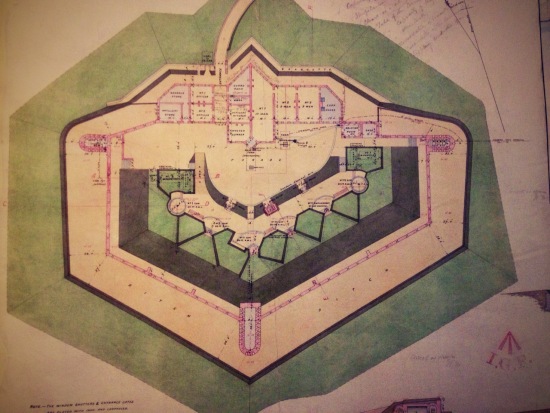
Shoreham Fort, Forthaven, Shoreham-by-Sea, BN43 5HY, Saturday 4th & Sunday 5th June, 11:00am–4:30pm. A family friendly event with military parade ground demonstrations and military vehicles on display. Refreshments, cake and food will be available on site from ‘Food for Fort’.
On the market
This building originated as a triple tenement cottage housing farm labourers and was used as such until Terry Willis purchased it in 1986. He reduced the cottages to ground level, modified the footings and rebuilt them as one house using as many of the original bricks and other materials as could be salvaged. As construction progressed old beams, doors, door frames and floorboards, all largely made of oak, were incorporated into the new building. He even placed a stone bearing the date 1856 that had previously been part of the original cottages on the front wall, giving the house an air of authenticity. A large, well established pond on the south side of the building was reduced to about half its size by filling around its circumference with hard-core. This was done in such a way that it still retained the appearance of the original pond.
A public footpath extending from the north end of Perching Drove runs through the large, picturesque front garden and from the back garden there are the most wonderful views west, across the Sussex Weald, to the ridge of the South Downs and Chanctonbury Ring. Watching the sunset from there is a truly magnificent sight.
Passage adapted from Anthony R. Brooks (2008) The Changing Times of Fulking & Edburton. Chichester: RPM Print & Design, pages 189-190.
On the market
Up to about 1934, Mr. W.H. Hudson owned the land on which Downside stands. It was later sold to Mr. Archie Mayler and his wife, who owned a large clothing store in Hove which specialised in school uniforms. Archie Mayler then had a house built on the site in the mid-1930s. Downside has extensive grounds associated with it, along with views to the south towards the Downs and to the north across the Sussex Weald.
Later, Archie Mayler’s son Jack and his wife Ursula took over the house. Jack Mayler was a Spitfire pilot during WWII and frequently flew low over Downside, dipping his wings to say hello. The Maylers subsequently sold the house to John and Barbara Williams who lived there for some years. It was then sold to Bernard and Jill Barker who converted the double garage to a “granny flat” and made several other alterations. They later sold it for business reasons to Graham and Yvonne Brooks, who added extensions to the rear of to the house and a tennis court. They also constructed a horseshoe shaped front drive with electric gates at the entrances for added security. In 2004 it was sold to the present owners who have completely re-landscaped the grounds, giving it a more spacious and open aspect.
Passage quoted from Anthony R. Brooks (2008) The Changing Times of Fulking & Edburton. Chichester: RPM Print & Design, page 139.

